| Raida Adon, Woman Without a Home, Tel Aviv Museum of Art, July 2014 (Curator, catalogue in English, Arabic and Hebrew) | | |
A woman sets out to look for a home. She wanders through the land, the snowy mountains, the desert, the forests, and along the seashores.[1] Seeking a place to put her bed, to shelter her fragile body, an anchor. She moves in an unknown land, in places with no local features, lacking a clear identity, even though they are suffused with the spirit and sounds of the East.[2] And only her Arab birthplace, the ancient place, is recognizable and known. On her journey, erect, determined, pushing a bed, she searches for her home. Like the chorus in a Greek tragedy, a crowd of people accompanies her in her quest, her wanderings, her loss. Sometimes following in her footsteps; sometimes moving ahead, carrying her in her bed, where she lies limp, resting.
A woman sets out to look for her home in a land embroiled in conflict, rife with discord. Her identity shaped in the alleyways of the old city where she was born, alleyways that remember the pain of the city to which she returns.[3] She is torn between two worlds, two identities. She lives between two societies entwined and woven together, yet in reality, they exist side by side in perpetual strife. She belongs to both, and in both she feels different. A stranger. Her body too retreats from her. Is abandoned. She is a stranger in her homeland, a stranger in her community, a stranger in her body.
A woman with a dual biography, split, mysterious,[4] goes forth to seek her identity. She writes one hundred and five letters to a friend whose sorrow and solitude find a path to her heart. And in them she weaves her dreams, her fears, her quest, her loneliness. Cries out her desolation. Leaves for her journey.
She searches for a place to rest her bed; a bed whose sheets have absorbed her sweat, her nightmares, her secrets, her dreams, her yearnings, her passions, her alienation. She wanders through arid deserts, snowcapped mountains, dense forests. And finally, the sea, a place of refuge. It has no solid ground or foundation; its waves sweep and pull. It recalls pain and disaster. Yet its power hypnotizes, inspires strength, and she sets her bed in it. And alongside, the pit is carved out. And the walkers march as if in a funeral procession, and the mournful singing accompanies them and the two identities. "We are looking for sanctuary. At last, we reach the sea. The crowd I met on my way join my search. They halt, and remain behind. We walk toward the sea, step into the water, and are swallowed up by the waves. The crowd disappears, and on the deserted beach only traces of the bed's wheels remain, like track lines in the sand."[5]
A woman, a bed, a crowd - moving between extremes. Working class women from Jericho, devouring apples with passion, staring directly into the camera, defiant, flaunting their power, rebelling against convention;[6] facing them, women in long black dresses tied together, restricted, imprisoned by religion and history;[7] and others - lamenting the past, the present. A woman cuts off her hair, her glory, in her grief. And after that, hangs on the wall, crucified. In the religious sphere, loaded and layered, she sometimes subverts the function of gender, dressing it in a new garb. The woman is the crucified; the woman cuts of her tresses (not his) in a powerful act; and the woman has no need of the serpent in order to speak her mind.
A woman moves between the town where she was born and the town where she lives. Akka (Acre), the root of her being, is woven into her search - the wall, the city's alleyways, the halls of the Knights, the sea, and Khan al-Umdan, fighting to keep its Palestinian identity. And opposite this - her present home, Yaffa (Jaffa), the Bride of the Sea, rising out of the waters, and together with her, weaving her fantasies. She dreams of the scenes, draws them, and then finally she films them. Like a dream catcher, she leads the photographer, the actors, and the viewer in the footsteps of her visions and her life, perhaps seeking to merge again with her body, or perhaps to unravel her foreignness, to dim the alienation.
Woman without a Home is the first solo museum exhibition of the artist and actress, Raida Adon.
| | | 1. The scenes, landscape imagery and aesthetics are somewhat reminiscent of the works of the Iranian artist, Shirin Neshat. Some also see a connection to the work of other artists, like Frida Kahlo and Marina Abramovic, although Adon notes she is not influenced by any of the three.
2. Add to this the Turkish music occasionally playing in the background.
3. See also Adon's work Beyond the Walls (2005).
4. Adon has Jewish roots in her family's distant past, and close connections in the present. However, her history and that of her family has many holes, and more is hidden than revealed.
5. All the information was taken from conversations and correspondence held with Adon in the months preceding the opening of the exhibition.
6. Adon noted that while shooting the scene, Israeli soldiers tried to stop the filming - with all of its symbolism.
7. The scene corresponds, to a degree, with Adon's work, Fasatin (2002).
| | |
| | | | 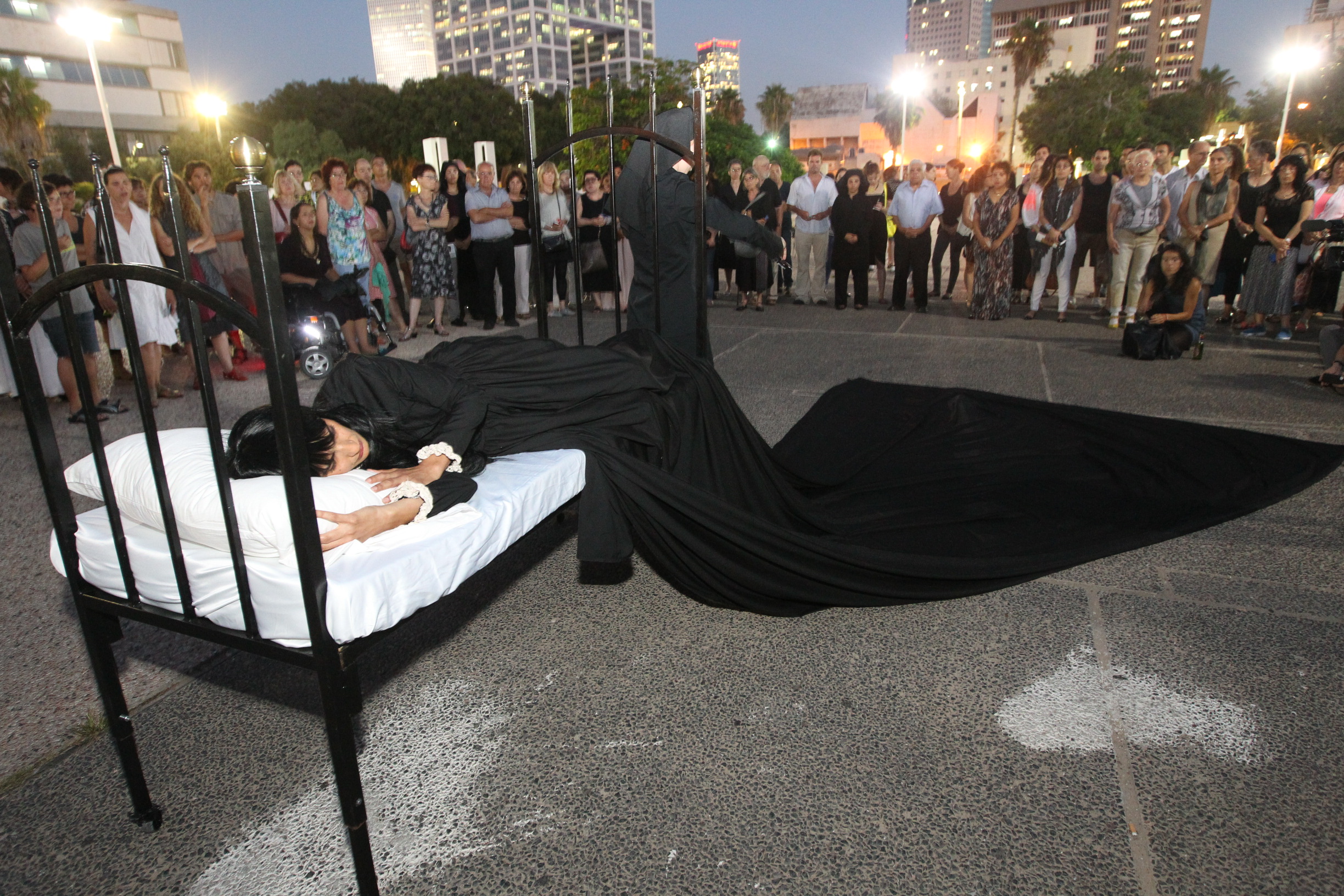 | | Tel Aviv Museum of Art, Performance, 10.7.14 (opening date) | | | 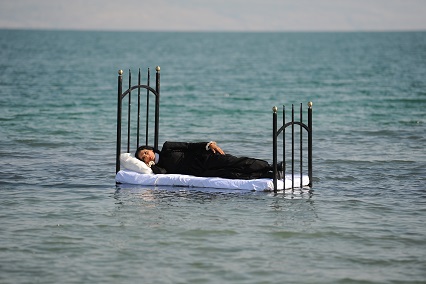 | | | | | 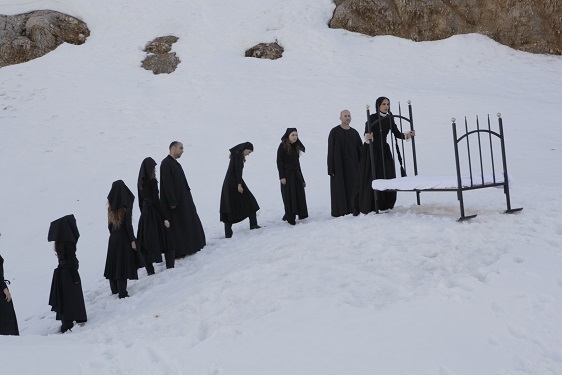 | | | | | 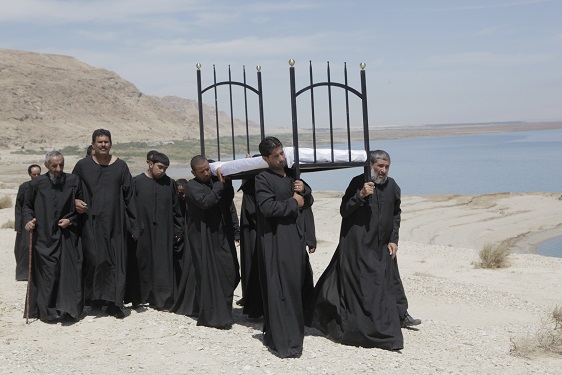 | | | | | 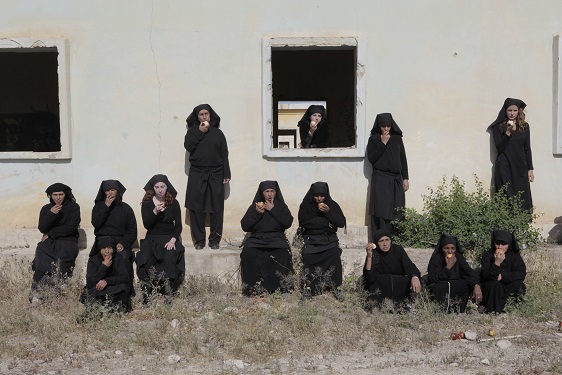 | | | | |
|
|
| |
|
|
|